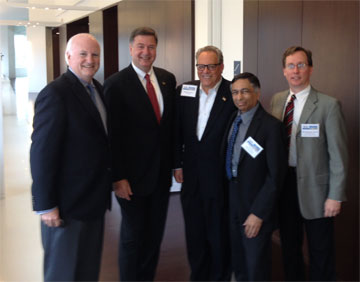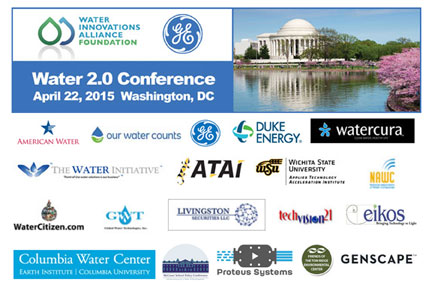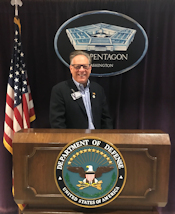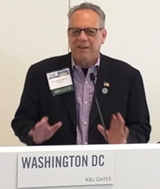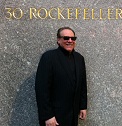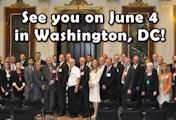NanoBCA Interview: Harry Bushong, President, Nano Risk Assessment International, Ltd. (“nRai”)
Posted on May 4th, 2015 in Uncategorized | No Comments »
NanoBCA Interview with Mr. Harry C. Bushong
President of Nano Risk Assessment International, Ltd. (“nRai”)
May 1, 2015
The NanoBCA is pleased to share the following interview with Harry Bushong, a long-time member of our community and a pioneer and staunch advocate for nanosafety.
The NanoBCA has always kept the topic of nanotech EHS (Environment Health Safety) at the forefront of its agenda and has strived to keep the community informed and engaged on this very important topic.
NanoBCA
Nano Risk Assessment International, Ltd. was the first risk assessment firm focused on nanosafety. Can you tell us how your business has evolved over the years and describe its focus today as well as that of the sister companies that it is affiliated with?
Mr. Bushong
Nano Risk Assessment International, Ltd. was indeed the first firm dedicated to providing nanosafety services. It’s hard to believe, but we’ve just marked our tenth anniversary. It’s been quite a ride and the landscape has changed dramatically over that time. To answer your question, I’ll describe briefly how we’ve evolved as a company, or rather I should say “a group of companies”, and what our focus is today. We started in Texas as a single company, nanoTox, Inc., focused on providing safety consulting services to nanomaterials companies in the U.S. Our headquarters remains in Texas to this day. However, as the demands for our services have evolved and the needs of our customers changed, we gradually expanded to be a group of companies with a worldwide reach and a more diversified array of services which include customized research support, government compliance, safety data design and collection, IP assessment, insurance assessment, and manufacturing scale-up. Along the way, we’ve established or acquired several business units that all now fall under our international umbrella organization, Nano Risk Assessment International, Ltd., (“nRai”) which is incorporated in the UK. We continue to provide nanosafety services to clients worldwide, including Fortune 500 companies, smaller to midscale companies, and universities. We have a division in Dublin, Ireland, nTI, which is affiliated with the Center for BioNano Interactions at the University College Dublin. nTI develops proprietary analytical procedures and kits for safety assessment of nanomaterials optimized according to the “Corona Patent”. We also assist nanomaterials manufacturing companies to scale-up their production capacities through Nano-PM, Inc. In addition to these, we have a few other business units in development which we hope to announce publicly in the near future.
NanoBCA
You have been a pioneer in the area of nanotech safety; what inspired you to go into this field?
Mr. Bushong
Early on as a businessman based in Houston, I was fortunate to have had the opportunity to interact with world-class nanotechnologists at Rice University. These were very exciting and inspirational times led by the preeminent work of Nobel Laureate, Dr. Richard Smalley. From this exposure we quickly realized that it was inevitable that nanosafety would become a cornerstone of the successful development of commercialization of nanotechnologies. So, we rolled up our sleeves and started to put together a team, and a group of companies, that could provide valuable counsel in this burgeoning sector.
NanoBCA
You have built one the most impressive boards that I have seen in our nanotech community. How did you attract such an esteemed group?
Mr. Bushong
Thank you for saying that, and I agree. We have been blessed to have some of the forefathers of nanotechnology, and other very prominent and capable businessmen, statesman and leaders join us. For instance: Dr. Malcolm Gillis (President Emeritus of Rice University) who funded Dr. Smalley’s Noble Prize lab, the Texas UK Collaborative with Lord Sainsbury, and helped form the Nano Health Alliance; former Governor of Virginia George Allen; and our Chairman, now retired Honorary Consul General Jan Dryselius are just a few of the elite caliber of leaders who have helped us develop this business. When he was the U.S. Senator from Virginia, Gov. Allen, as you very well know, was the Lead Co-Sponsor of the 21st Century Nanotechnology Research & Development Act, which your organization, the NanoBusiness Commercialization Association, was instrumental in developing widespread support for through your advocacy. I’d also like to mention Allen Gelwick who is one of the thought leaders and visionaries in the insurance industry with regard to the importance of standards for potential insurance risk assessment and underwriting pertaining to nanomaterial use.
NanoBCA
Thank you Harry. We at the NanoBCA have been in the trenches with you every step along the way. In your opinion, how have things changed regarding perception of safety issues from when you started this journey?
Mr. Bushong
That’s a great question. Things have changed so much from the early days. Ten years ago, as a society we were still very much in the research and development days of nanotechnology. At that time, safety beyond the lab space was not of major concern to most stakeholders for a variety of reasons. We simply did not have the data or the standardization needed to establish significant regulatory oversight, and frankly the very early days of commercialization were just beginning. This makes me think of our good friend Dr. Mihail Roco, whom I was with just a month or so ago in London where we facilitated his presentation at the Royal Institution of Great Britain. His predictions (and well-known chart) regarding the timeline of nanotechnology development and commercialization, as you also know, highlights this year, 2015, as the year that global market impact of nanotechnologies will reach $1 Trillion. That represents a very slow but steady growth from $200 Million in 2000. So, it took 15 years to grow from $200 Million to $1 Trillion. What is most interesting to me is that Dr. Roco predicts a jump from $1 Trillion to $3 Trillion in just five years time, from 2015 to 2020. That’s an exponential leap. Dr. Roco’s predictions have been exceptionally accurate. So, it’s fair to say that we are now truly in the midst of a rapid growth phase of nanotechnology commercialization. And with that, we see rapidly increasing interest in issues of nanosafety across the lifecycle of nanomaterials from research to development to commercialization and with regard to worker safety on the manufacturing floor to the consumer and right through to the environmental disposal of these materials.
NanoBCA
You mentioned Dr. Roco’s presentation in London. Can you tell us more about that?
Mr. Bushong
Last year we started a Leadership Series in London at the Royal Institution of Great Britain where we showcase nanotechnology leaders from across the world. It’s been very successful and continues to grow. We wanted a nanotechnology event that engaged the business community, and especially the insurance industry. Without insurance, there would be no nano-enabled products.
We’ve attempted to engage all insurers and reinsurers, helping to educate the insurance and risk management community. This included support for a not-for-profit organization known as the “Nano Insurance Forum” that was well received, but a limited number of markets were willing to support with a preference to each company developing their own approach to address this emerging risk. The number of insurance companies with underwriting questions or hazard classifications relating to engineered nanomaterials produced by insured or are part of the supply chain, but not disclosed remains limited.
Our main benefactor for the Leadership Series is Lockton Companies, and we also have a number of nano industry corporate leaders who support the events. Our first event at The Royal Institution of Great Britain included presentations by both Dr. Malcolm Gillis and Royal Commissioner Michael Depledge. Our second event featured Dr. Mihail Roco. We are excited to announce that Dr. Michael A. Meador, Director of the National Nanotechnology Coordination Office, has agreed to be our next presenter in the series, on Tuesday October 20, 2015 in London. The Royal Institution of Great Britain has been a perfect venue for the Leadership Series. As you know, it is also the home of the highly regarded Faraday Museum, which focuses on the history of science. I highly encourage everyone to join us for Dr. Meador’s presentation in October.
NanoBCA
What are your impressions of the regulatory environment in the U.S. as compared to abroad?
Mr. Bushong
After a few years, our company was quickly drawn to the European Union because the EU was a few years ahead of the U.S. with regard to formal oversight of nanosafety. We encountered a great amount of interest and demand for our expertise in Europe. And while we were not intentionally looking for business in Europe (we were focused in the U.S. at the time), it really turned out to be a godsend for us because it introduced us to so many important players and truly allowed us to globalize our team and our markets. Now, the U.S. regulatory environment is very rapidly catching up with the EU as you can see in the ramped up activities of the EPA and FDA over the past year or so.
NanoBCA
How do you see the regulatory environment developing over the coming 5 years?
Mr. Bushong
Given the truth of Dr. Roco’s predictions which we can all see evolving before our eyes, there is no doubt that the massive increase of nanomaterials in the marketplace will coincide with a similar increase in interest and oversight of their safety, not only by regulators but by other interested parties. The truth of the matter is that all Fortune 500 and FTSE 100 companies that manufacturer anything, are utilizing nanomaterials, either directly or through their supply chain. Increased regulatory oversight is bound to occur. The Japanese and Koreans are implementing rules as well. The bottom line is that industry needs to be responsible and test the safety of their engineered nanoparticles before they scale-up production and expose either their employees, consumers or the environment to unknown risks. Industry leaders that are proactive on Health and Safety will have a competitive advantage in the market place. We are starting to see it now.
NanoBCA
What other “interested parties” are you referring to?
Mr. Bushong
Well, there have been some very significant developments in the last year or so outside the realm of just the regulatory agencies. First, the class action litigation against Johnson & Johnson subsidiary DePuy Orthopaedics which involved alleged damage done to patients related to a nanocoating on their hip implants has caused a significant increase in interest to better understand safety data of nanomaterials in products. Johnson & Johnson’s settlements in that case are at around $3 Billion and still growing. Secondly, Dunkin’ Donuts, as you know, just acquiesced to pressure from an advocacy group to remove titanium dioxide nanoparticles from its powdered donuts. This development just scratches the surface of nanomaterials that are currently in the marketplace in food, food packaging and cosmetics, not to mention many other products. The visibility and broad media coverage of the Dunkin’ Donuts decision has put a spotlight on the issue of nanosafety and has greatly increased interest among a broad spectrum of stakeholders. And finally, in light of these developments, the insurance sector has taken a much more focused approach to issues of nanosafety. And so, there are a lot of forces at work outside of the regulatory agencies that are driving serious interest in the services that we provide at Nano Risk Assessment International, Ltd. and our affiliated companies.
NanoBCA
Harry, can you provide us with a little more technical detail of why companies should engage with Nano Risk Assessment International, Ltd.
Mr. Bushong
Great question. Let me start with the basic summary and we can expand from there.
As we all know, the physical and chemical properties of nanomaterials are particles known to be significantly unique from materials having larger crystallites but with the same chemical composition. This allows for optimal business applications of these unique nanoparticle properties that companies engineer into their products which function better than the commonly used micro-scaled materials of the 20th Century.
Characterization of these nanomaterials is possible, and highly recommended by us, with analytical chemical methods in typical environments, from a life-cycle management perspective, recognizing the cost of ownership perspective from cradle-to-grave. This is very important for responsible advanced material development. By “responsible”, I mean that companies that engage in this effort will greatly reduce the risks that they potentially adverse action by regulatory agency action, consumer legal action, or that they fall short of requirements demanded by sought after investors, or insurers.
In the long run, adherence to these emerging national standards for safety, also reduces regulatory burden and oversight, thus creating a total cost of ownership savings not just a business cost. At Nano Risk Assessment International, Ltd., we have the team and knowhow to assist and we are seeing that a growing number of companies are finding value in making strategic and smart decisions regarding their safety program.
NanoBCA
Thank you for inviting the NanoBCA to serve on the judges’ panel for your NanoArt Contest. It’s a terrific program and an honor for us to be involved. How did the NanoArt Contest get started?
Mr. Bushong
The contest has exceeded our expectations and continues to engage great young minds across the world. The first year we focused on French PhD students in STEM education fields. In Year 2, we expanded to include students across Europe. This year, we’ve included U.S. PhD students. You can learn more at: www.fondation-nanosciences.fr/ . I encourage everyone to spread the word. We have great prizes: a monthly $200 winner, and our top 3 annual prizes are $5,000, $3,000 and $2,000. Our contest organizer is the Foundation Nanoscience based in Grenoble, France.
NanoBCA
Harry, thank you for your time and thoughtful responses. We wish you luck and look forward to seeing you and your team at the 2015 NanoBCA DC Roundtable, May 19-20th, in Washington, DC.
—————————————————————
REGISTER TODAY $250
2015 NanoBCA DC Roundtable
May 19-20th
Washington, DC
The NanoBusiness Commercialization Association (NanoBCA) would like to announce an AGENDA UPDATE for the 2015 DC Roundtable May 19-20th. We will be returning to Washington, DC for our 15th visit, dating back to 2002, meeting with numerous government officials in regard to the National Nanotechnology Initiative (NNI).
We will have the opportunity to meet with representatives from the Legislative Branch and from the Executive Branch. We will be meeting with representatives from NNCO, NSF, DOD, DOE, NIH and other agencies participating in the funding of the NNI.
Join NanoBCA in Washington, DC, May 19-20th, to learn about the issues at hand and to meet with and be heard by the key policy makers.
—————————————————————
You will be able to meet Mr. Harry C. Bushong and his team at our 2015 NanoBCA DC Roundtable. Looking forward to seeing you in Washington DC!
Regards,
Vincent Caprio “Serving the Nanotechnology Community for Over a Decade”
Executive Director
NanoBusiness Commercialization Association
203-733-1949
vincent@nanobca.org
www.nanobca.org
www.vincentcaprio.org



